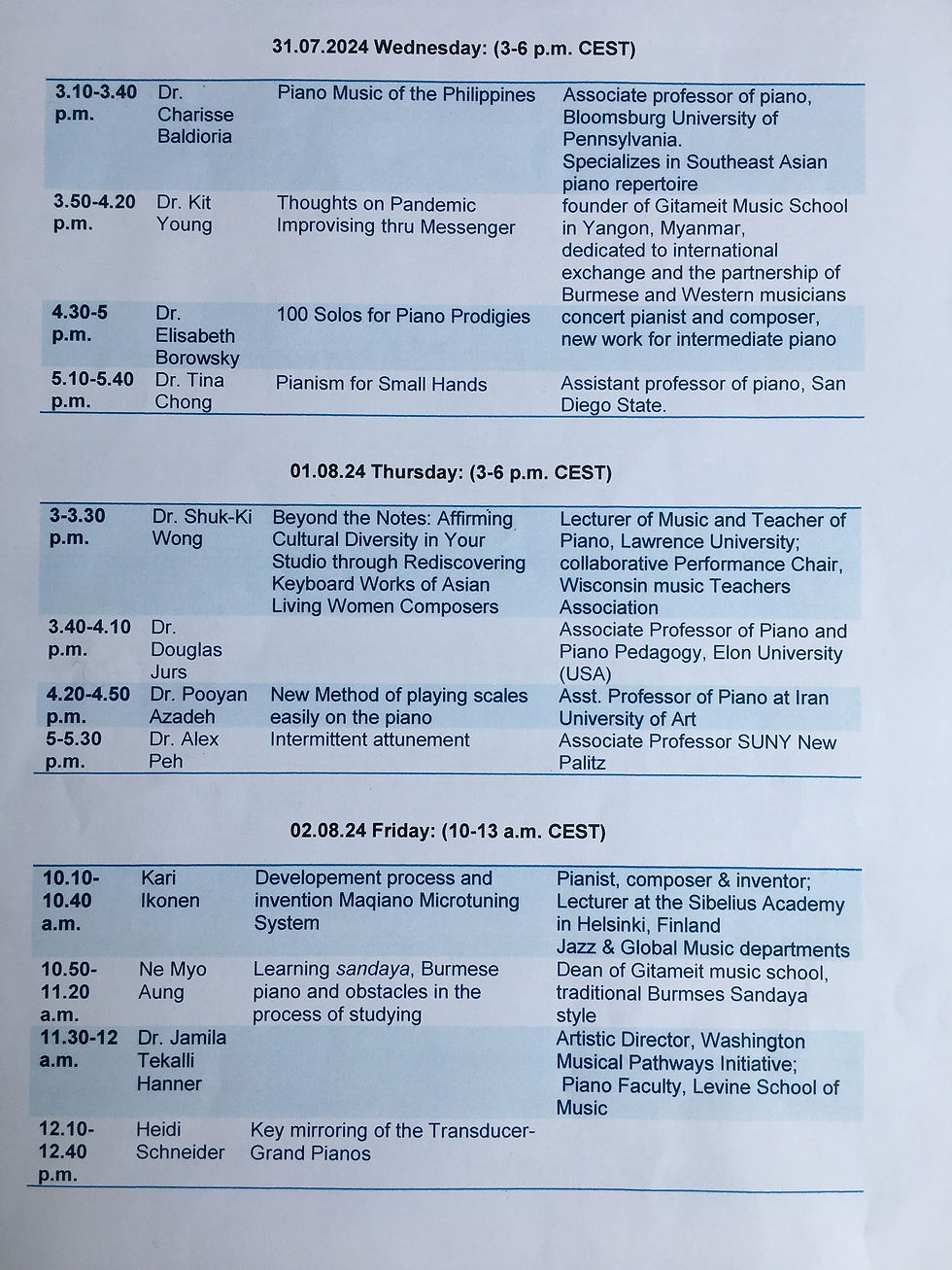"Key mirroring of the Transducer Grand Piano" - Workshop at the the Young Artists Festival in Bayreuth
- Heidi Schneider
- Oct 4, 2024
- 2 min read
The digital workshop "Intercultural Piano Pedagogy Project 2024" took place as part of the 74th Young Artists Festival Bayreuth in the Steingraeber piano manufactory.


There were online and live presentations with ensembles from numerous countries.
On Friday, August 2, 2024 at noon, my lecture from the EPTA conference in Lucerne (March 2, 2024) was shown as an online presentation and was broadcast to at least three continents.
I then presented the Steingraeber Transducer Grand Piano with the built-in keyboard mirroring. Those interested were of course allowed to try out the instrument.
“The further development of technology and the combination of acoustic instruments with today's electronic possibilities makes many pianists' hearts beat faster. This makes it possible to program the notes appearing on the acoustic grand piano to other keys. Additional tones are also possible, so that Persian and Arabic music can be played with 1/4-note intervals.”
This means that mirrored and split keyboards are also possible with these instruments.
I demonstrated the mirroring with the C major Prelude from Bach's Well-Tempered Clavier. Although the mirroring is not yet optimal, it shows for the time being that it works. As the mirroring here takes place on the note A4 with a frequency of 442 Hz, I am not sitting centrally in front of the piano, but clearly shifted to the right. And when I use the fingerings for the C major prelude, it sounds in D major. This is not ideal for people with absolute pitch.
In order to maintain the fingering symmetry and the acoustic pitch, also when playing the grand piano mirrored, a mirroring around the note D4 would be more favorable.
Here you see more favorable mirroring variants, which will certainly find their way into digitally programmable keyboard instruments in the near future:

The mirrored keyboard opens up completely new possibilities:
1) It makes it easier for left-handers to start playing the piano and allows them to fully exploit their musical potential.
2) When composing, it creates endless new possibilities for the most diverse sound variations.
3) It also offers the opportunity to prepare for playing the Mangeot piano, on which the standard keyboard is combined with the mirrored keyboard in one instrument. This was used by pianists in the 19th century. Why don't we use it today?

